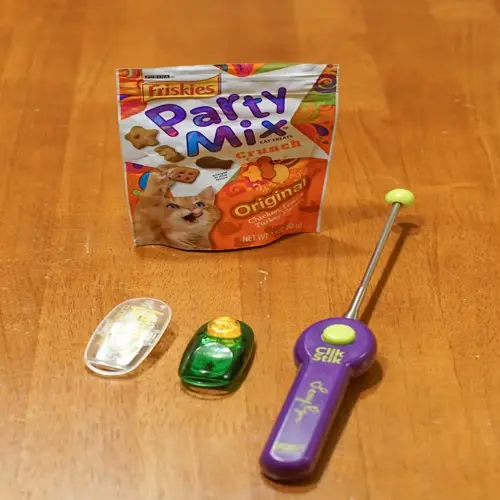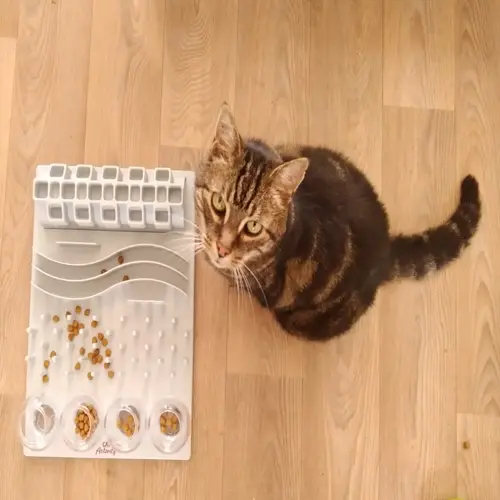How much should I feed my cat daily?

Written by
John Williams
Reviewed by
Prof. Henry Webster, Ph.D.To determine your cat's daily food portions, the key is knowing the cat's weight, age, and activity level. An average adult cat requires approximately 20 calories per pound of body weight. This is the average, and from this you can work up or down depending on the cat's activity level, rate of metabolism, and so on. Always use kitchen scales instead of measures, as you will obtain more accurate results.
Weight Monitoring
- Weigh your cat monthly using precise pet scales
- Track trends in a dedicated journal
- Adjust portions if weight changes exceed 5%
Life Stage Adjustments
- Kittens: Feed 3-4 meals of high-protein food
- Adults: Maintain consistent 2-meal schedule
- Seniors: Increase protein while reducing calories
Special Circumstances
- Pregnant cats: Triple calorie intake
- Indoor cats: Reduce portions by 10-20%
- Active cats: Add 15% more calories
Always use kitchen scales to measure food rather than volume cups. Due to wide differences in kibble size, the same volume cannot be relied upon to be consistent. I would recommend using digital scales that are accurate to 1g. Weigh both dry food and canned food separately, and then combine them. This helps to prevent accidental over-feeding, which is the cause of obesity.
Adapt portion sizes based on monthly adjustments of body condition. Feel the cat's ribs applying light pressure to the ribs. They should be similar to the back of your hand. If you cannot feel the ribs apply, you should decrease the amount fed by 5%. If ribs are prominent, increase the food by 10 percent. Note down changes in food fed to record outcomes.
Before making any significant changes to your diet, consult with your veterinarian first. They are the ones who will assess your dog's muscle condition and health markers. Special needs, such as those in dogs suffering from kidney disease and diabetes, will require prescription diets. Never change your pet's food suddenly. You should follow the seven-day protocol, gradually mixing the old food with the new food over this period.
Feeding properly helps prevent several common health issues. Portion control helps maintain your pet's healthy weight, which in turn protects their joints. Scheduled feeding helps prevent anxiety and begging behaviors. Your attention to detail can have a direct impact on your cat's lifespan and overall quality of life.
Read the full article: Complete Cat Feeding Guidelines for Every Owner

